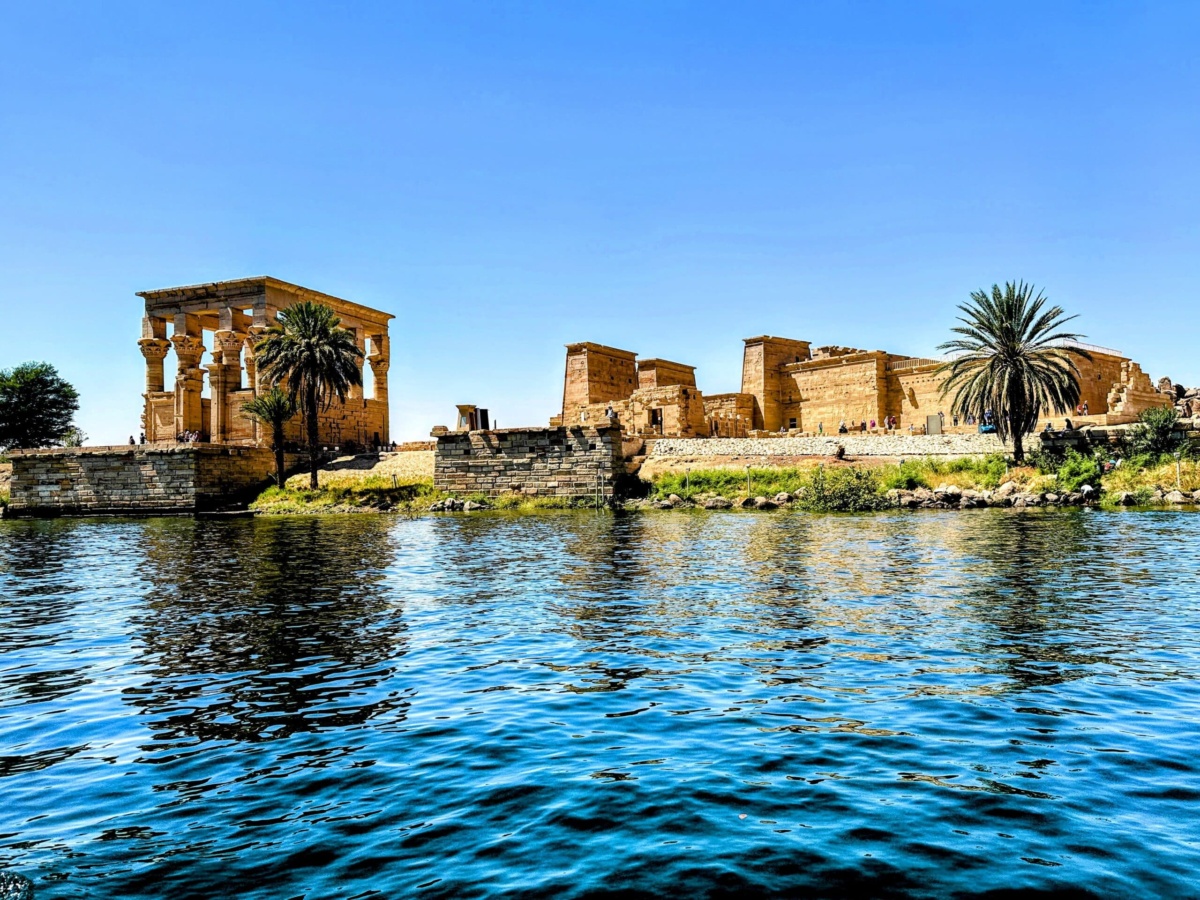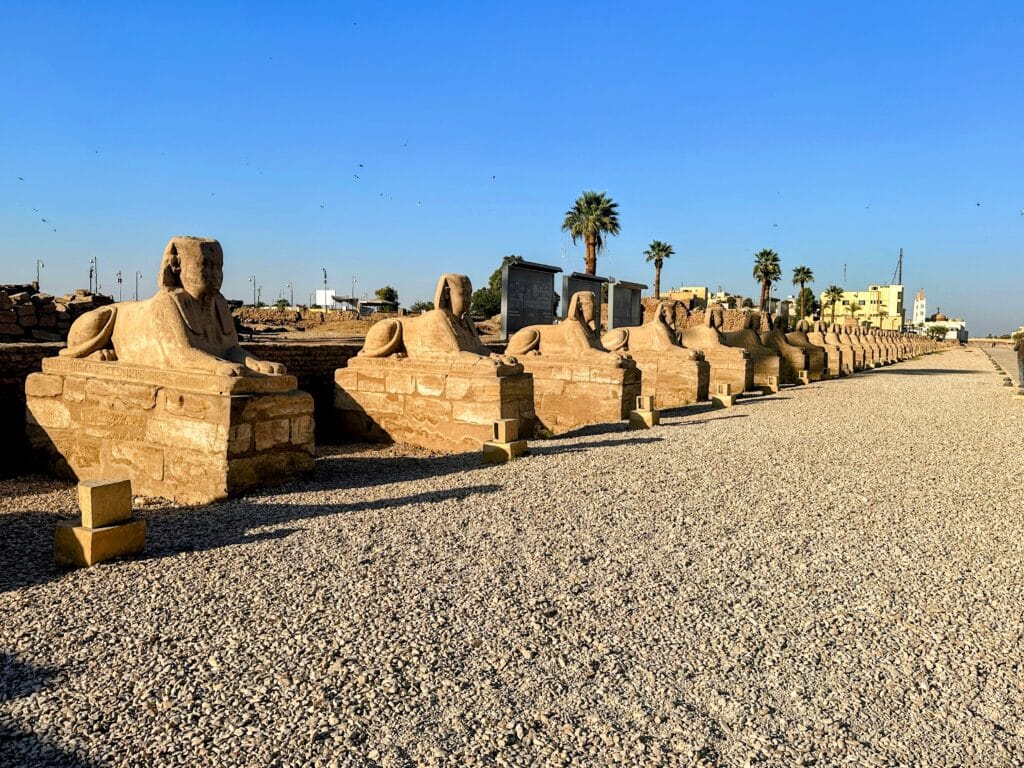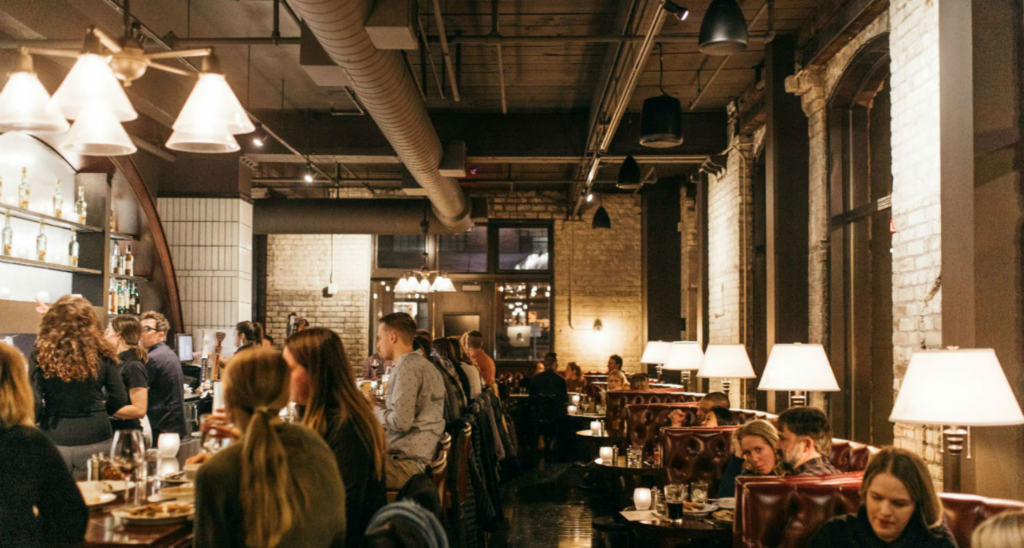May 25, 2023
We were going to be prepared for our upcoming trip to Egypt. We’ve been talking about going for nearly 20 years, and there was never the right time or circumstances, until now. Time for the cram session so we could really appreciate this experience.
First, we bought four incredible books about Ancient Egypt. We opened one and promptly said, “what a great book, let’s read it later over some wine.”
Didn’t happen. (Disclaimer: Don’t mix alcohol and Ancient Egypt books).
We pulled up multiple travel recommendations about what not to miss and what restaurants to try in Cairo. I printed them all, and we promptly never read them. Although, we did carry the poundage along unopened for the entire two-week trip.
So, we decided to go for the element of surprise (we also had a guide lined up, so laziness prevailed).
I mean, what more do you need to know? Egypt is old. It has pyramids. Cairo is supposed to be overpopulated and dirty. There are a bunch of temples and tombs, including King Tut. The Nile River runs through Egypt.
We’re good to go.
Perception versus reality is a funny thing, especially when it comes to traveling to a such an unknown-known place like Egypt. We were about to embark upon the most fascinating trip we’ve ever had and not for any of the reasons we thought.
Perception vs. Reality
Perception: Egypt is old.
Reality: Egypt is not old, it is ancient. When they say 1900s or 2000s, they mean B.C. And that’s not even close to the oldest elements in the country. Some of the most incredible ancient developments took place here. We should have read those damn books.
Perception: The Nile River runs through Egypt.
Reality: The Nile River is Egypt. To expand, the Nile River is Africa. Yes, Egypt is indeed in Africa. The Nile is probably the most important element of the country.

The Nile from above
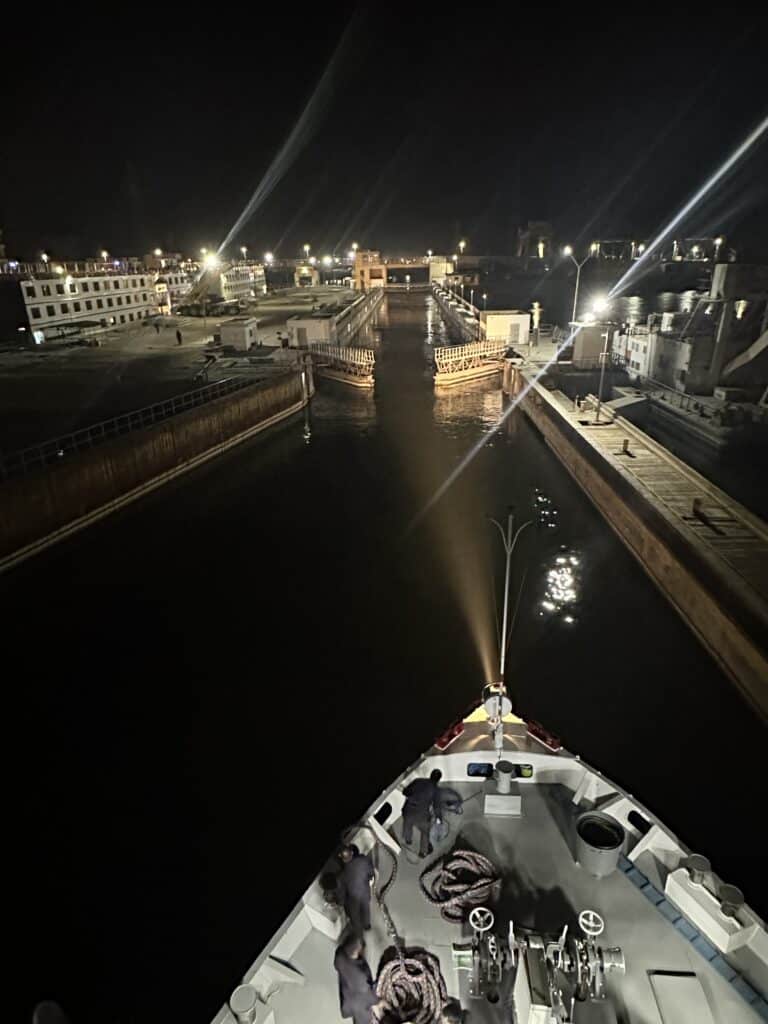
Nile River Cruise
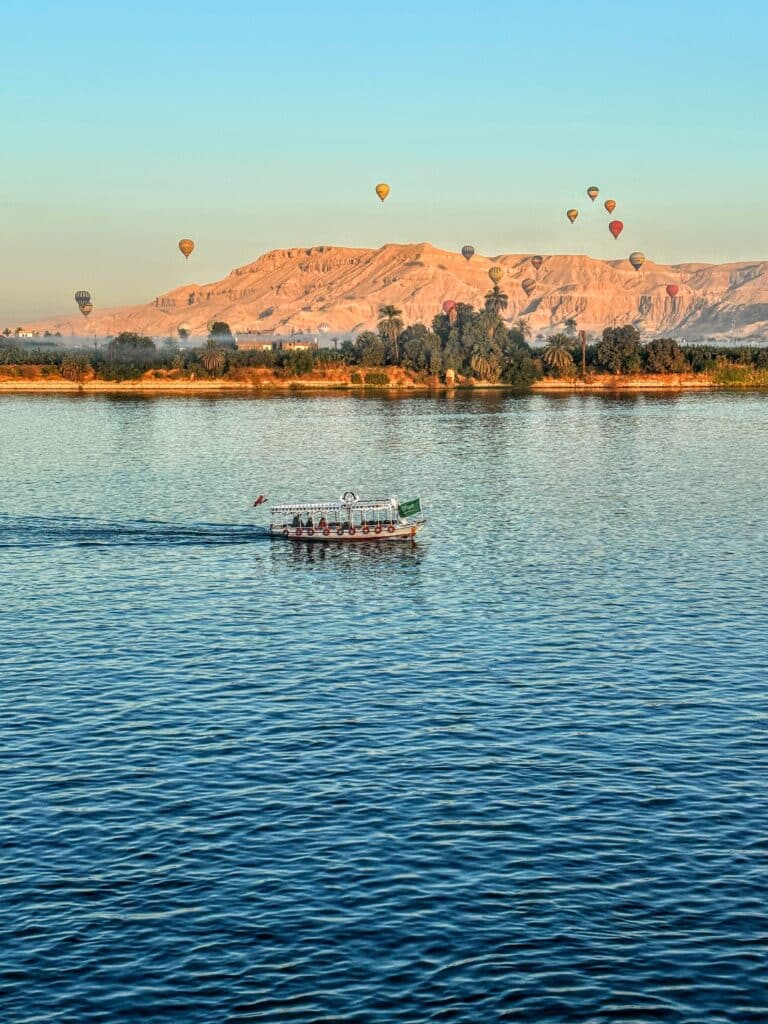
Hot air balloons over the Valley of the Kings
Perception: The pyramids are the highlight of an Egyptian trip.
Reality: The Pyramids of Giza are in the crowded, smoggy outskirts of Cairo and would be visible from almost everywhere if not for the smog. Don’t get me wrong, the pyramids of Giza and the Sphinx are fascinating and a must see, but more for the reason of why they exist and how they were constructed. We personally liked the Step Pyramid in Saqqara, along with the recent archaeological finds around there, much better.
Perception: Egypt is in the desert.
Reality: Egypt’s seasons are hot and really hot. It rains about every nine years for 2–3 minutes (except if you travel with George. Then you experience unprecedented rain in Sharm el-Sheikh).
Perception: King Tut is the most famous king of Egypt.
Reality: Not even close. He was a young king with a totally blinged out tomb that no one could find until the 1920s. King Ramses the II, III, IV, through the IX, X, XI are probably pretty ticked about this perception. Turns out they just didn’t hide their tombs as well as Tut did in the Valley of the Kings.
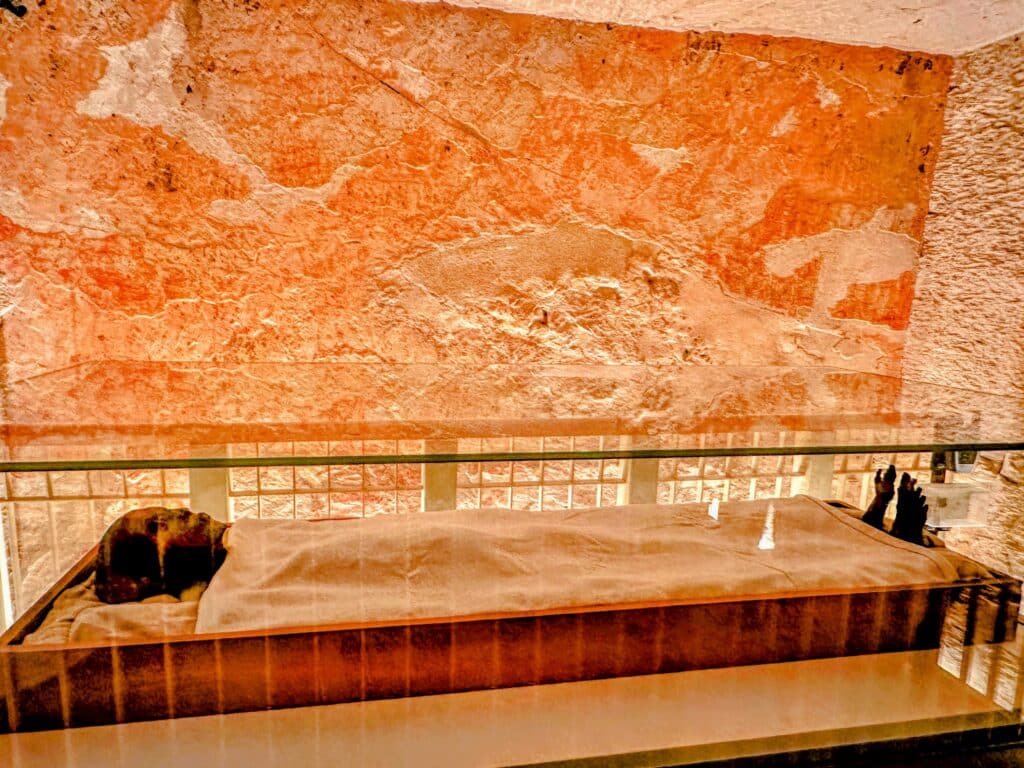
King Tut
Perception: All the cool shit found in Egypt will be found on a trip to Egypt.
Reality: The Brits stole everything they could find and brought it back to their museums. You can typically find some of the most important worldwide antiquities in a British museum. However, Egypt, with the completion of the GEM (Grand Egyptian Museum) is getting many of them back. FYI, King Tut’s treasures all went to Britain, yet King Tut is still lying there in his Valley of the Kings tomb. His gold is gone, but he looks pretty peaceful. As much as a mummy can look.
Perception: If you’re claustrophobic, don’t go into an Egyptian tomb.
Reality: If you’re claustrophobic, don’t go into an Egyptian tomb.
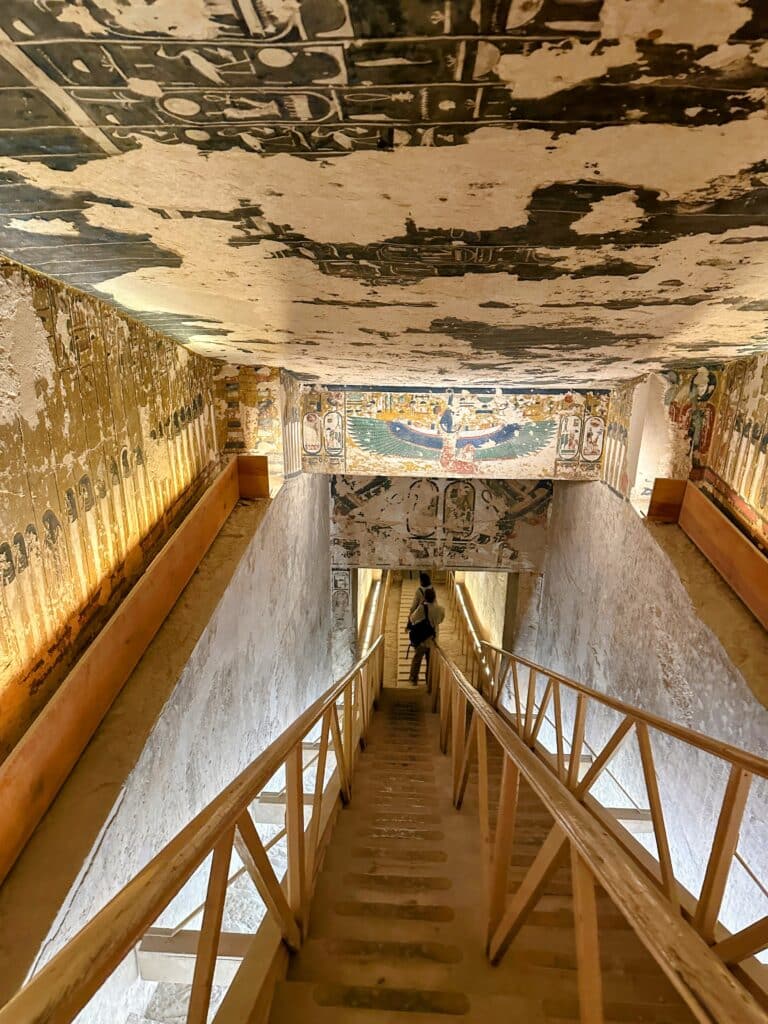
Tomb entrance
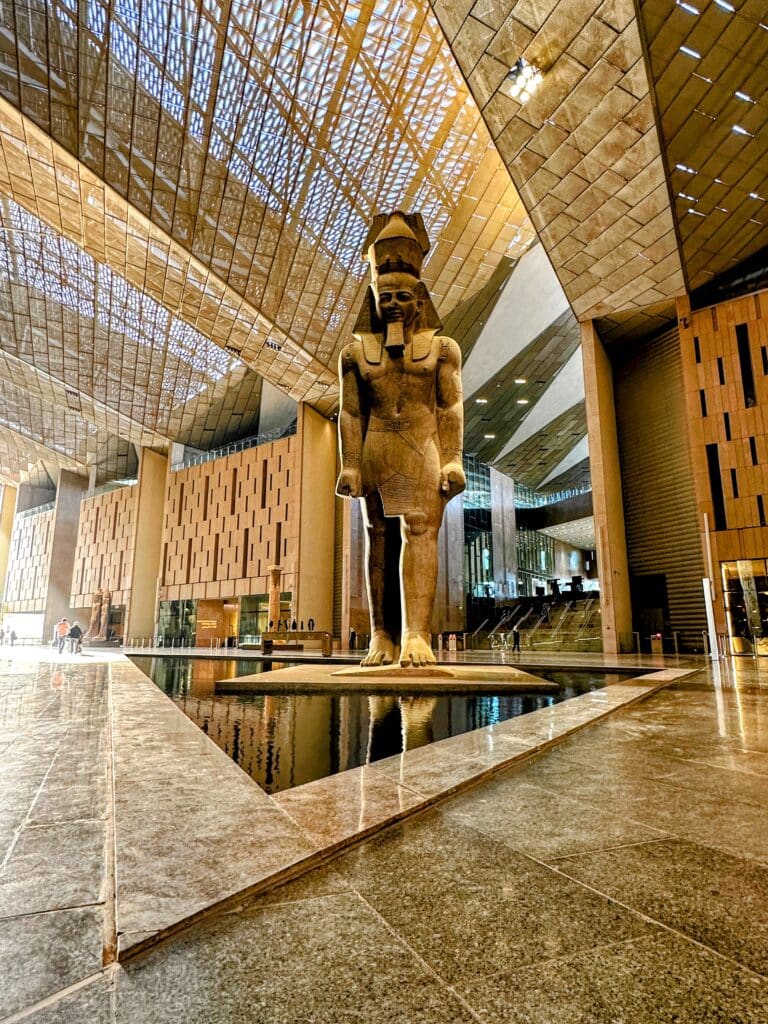
Grand Egyptian Museum
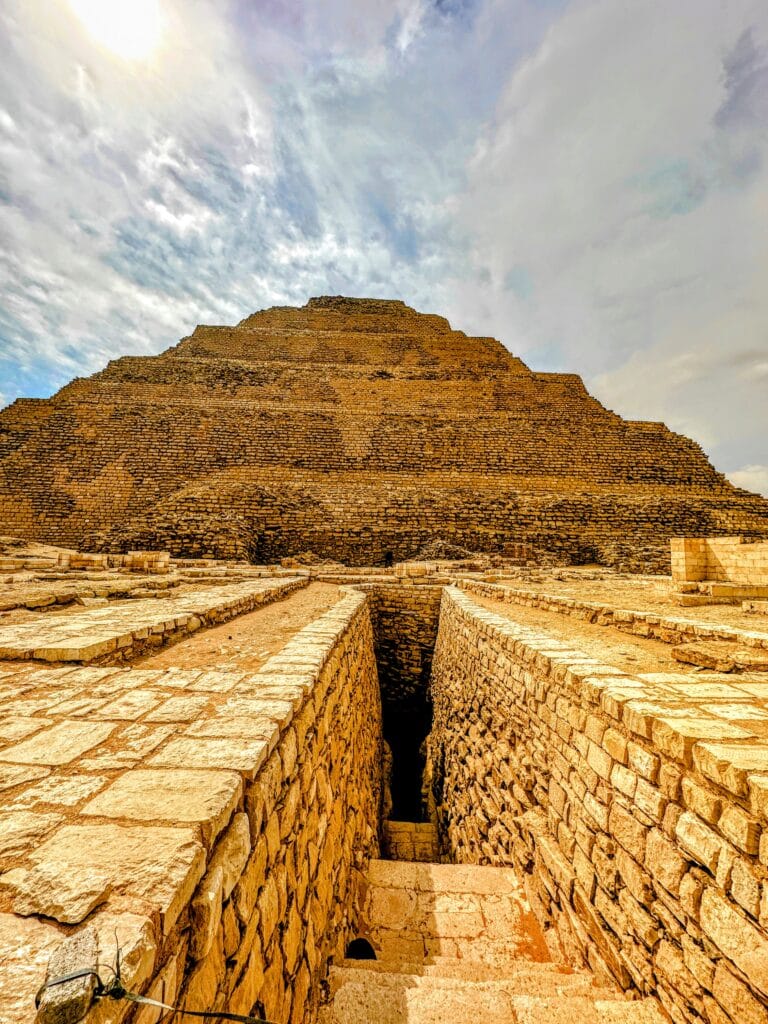
Step pyramid in Saqqara
A few tips and tricks, must-dos and other probably useless tidbits
Best time to go to Egypt:
November–March. Remember that desert comment? It’s hot and dry.
Best way to go to Egypt:
The only way to go is with a guide and support. You could just drop into Cairo and have the hotel arrange a pyramid tour, piece together a cruise, etc., but the perspective and history you get from a knowledgeable guide are really the only way to go. For guides, pick wisely. Our guide was an Egyptologist who brought the known and unknown alive and was passionate about Egyptian history. Other guides we overheard seemed to be just reading from a guidebook.
NOTE: We coordinated a tour through Artisans of Leisure and met Basam, who was with us for the whole trip. Either could put a tour together and not miss a thing. basamlovesjesus@gmail.com or WhatsApp +20 122 314 9628.
Start your trip:
In Cairo, with visits to Saqqara and the Pyramids of Giza first before the rest of the country. Also, don’t miss a little tour of the city and see the Mosque of Muhammed Ali and the new GEM (with incredible views of the pyramids). We’re not museum people, but this one is worth it.
Spend some time in old Cairo, and you’ll get an incredible slice of history, including a spot the Virgin Mary hid with baby Jesus. Along with the history, is one of the biggest, craziest markets in the world, Khan el-Khalili.
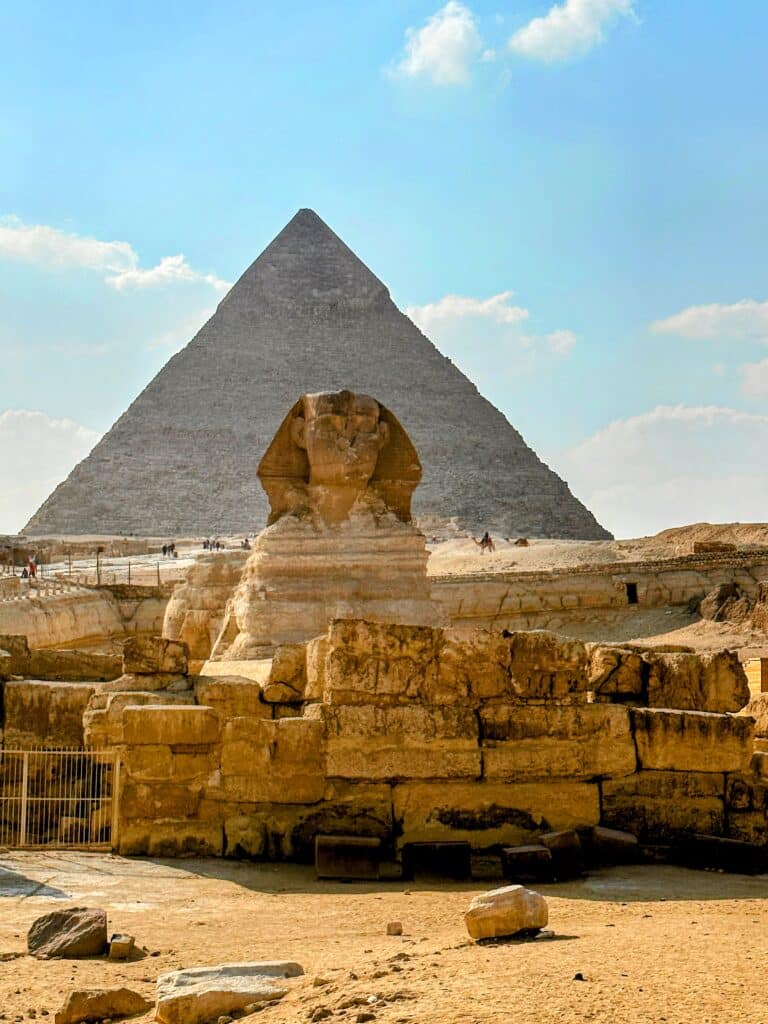
Pyramids and Sphinx in Giza
Be prepared in Cairo:
Cairo is dirty, crowded and the traffic is mind-numbingly painful, frustrating and ridiculous, and that is an opinion based on visits to places like Hanoi, Beijing and Bangkok, so that’s saying something. Other than in Old Cairo, it’s not a walking city, although if your hotel is positioned close to the walking path on the Nile, you can pay to walk along the river. Also, most of the recommended restaurants are in hotels, and almost all known hotels are on the Nile.
Be even more prepared:
To tip everyone for everything. Have copious amounts of small bills available no matter where you are or whom you’re with. Tips are expected for everything, even getting out of the way. We were most unprepared for this, and getting Egyptian cash is not terribly easy.
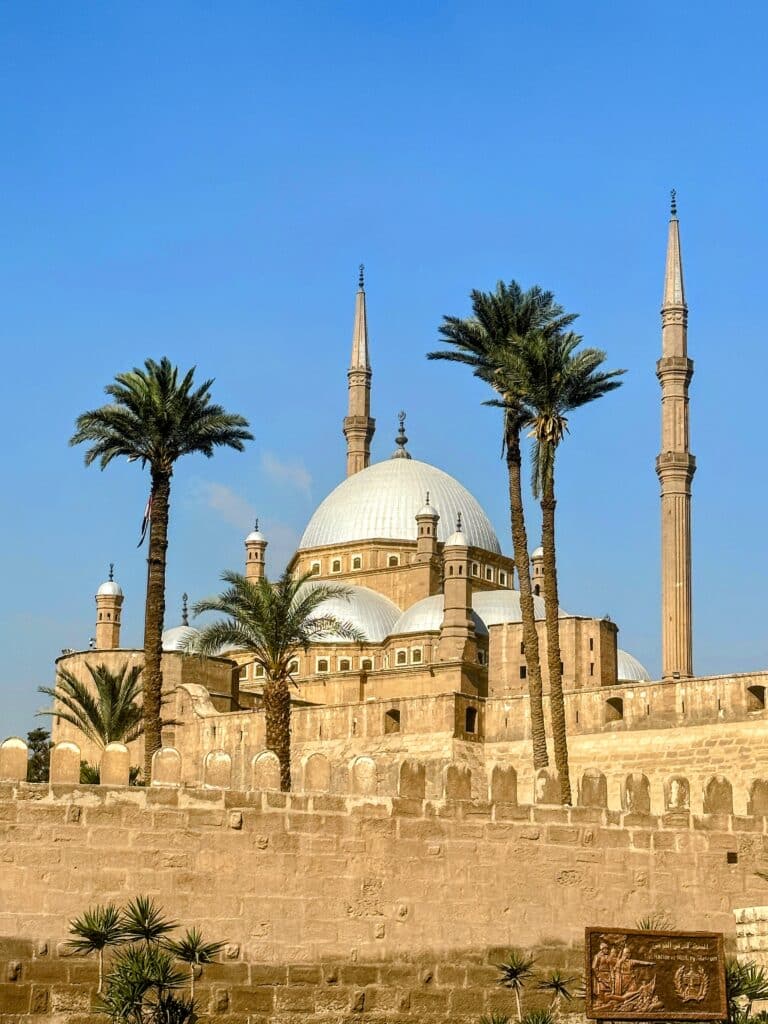
Mosque of Muhammad Ali
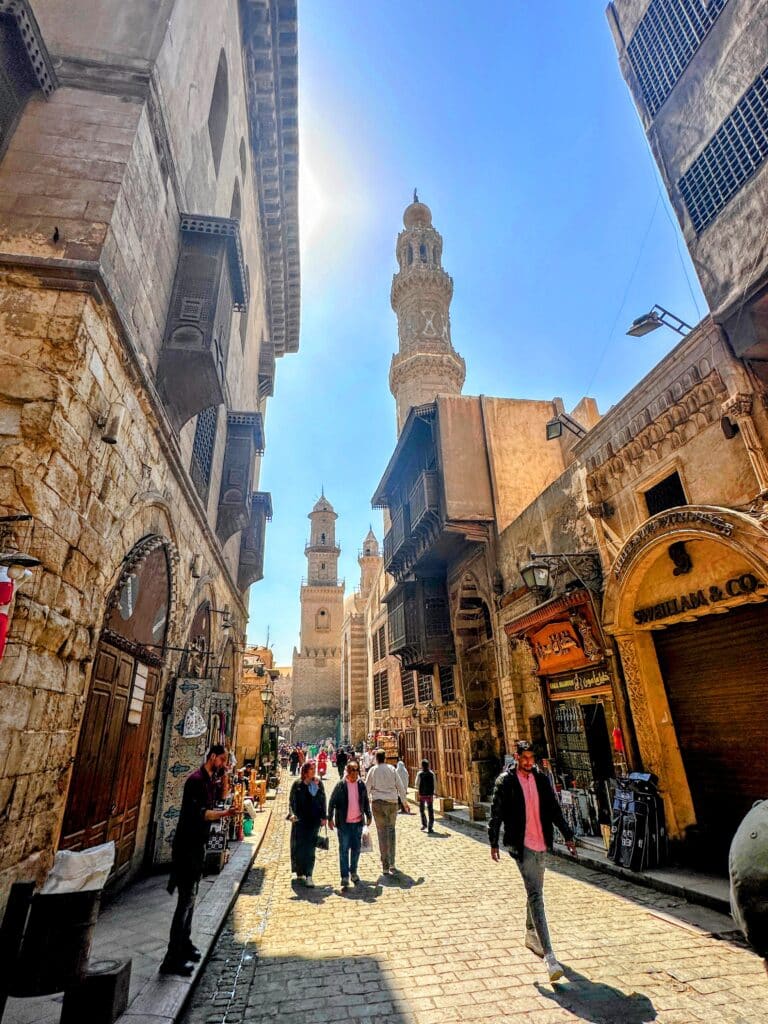
Old Cairo
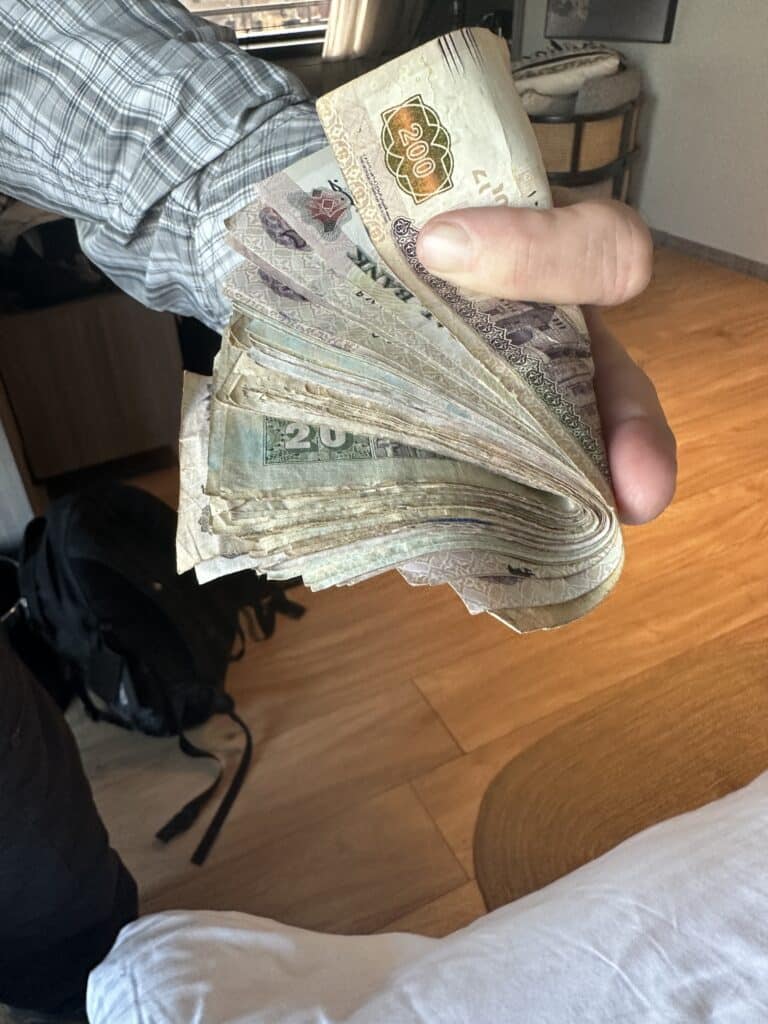
Egyptian Cash
After Cairo:
From Cairo, the rest of the must-sees are either a long car or short airplane ride away (if Air Egypt is on time, which happened once). They are all concentrated on the Nile.
- First stop: Fly to Abu Simbel via Aswan
I read our itinerary and thought it was crazy to take two flights all the way down near the border of Sudan to see ONE temple, Abu Simbel. Well, technically two temples, Egyptian King Ramses II built one for himself and one for his favorite of his many, many wives back in 1200 B.C.
In summary: It was worth it.
- Second stop: back to Aswan
Aswan is the jumping off point for most Nile River cruises but is an important historic city itself. In the area is the high dam (one of the world’s largest dams to use the Nile to provide water and power for Egypt) and the Philae Temple. The guides will try to get you to the Nubian Museum (great if you like museums … we did it “quick style” as our guide, Basam, said) and the unfinished obelisk. If you’ve got time, give them a look, but we enjoyed our time overlooking the Aswan Low Dam from the BenBen Hotel. No need to spend so much time in transport.
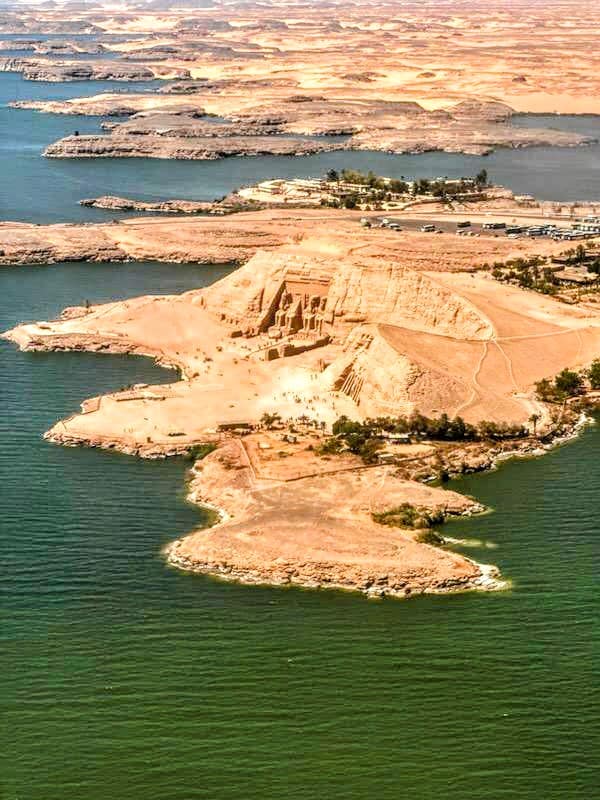
Abu Simbel from above
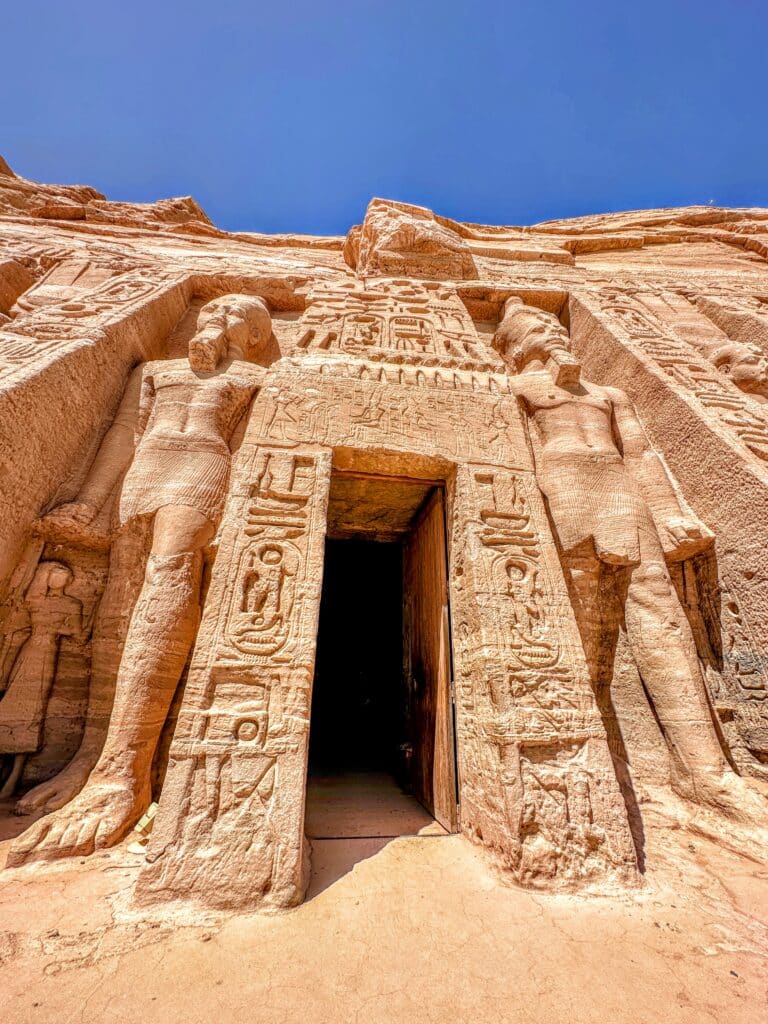
Abu Simbel
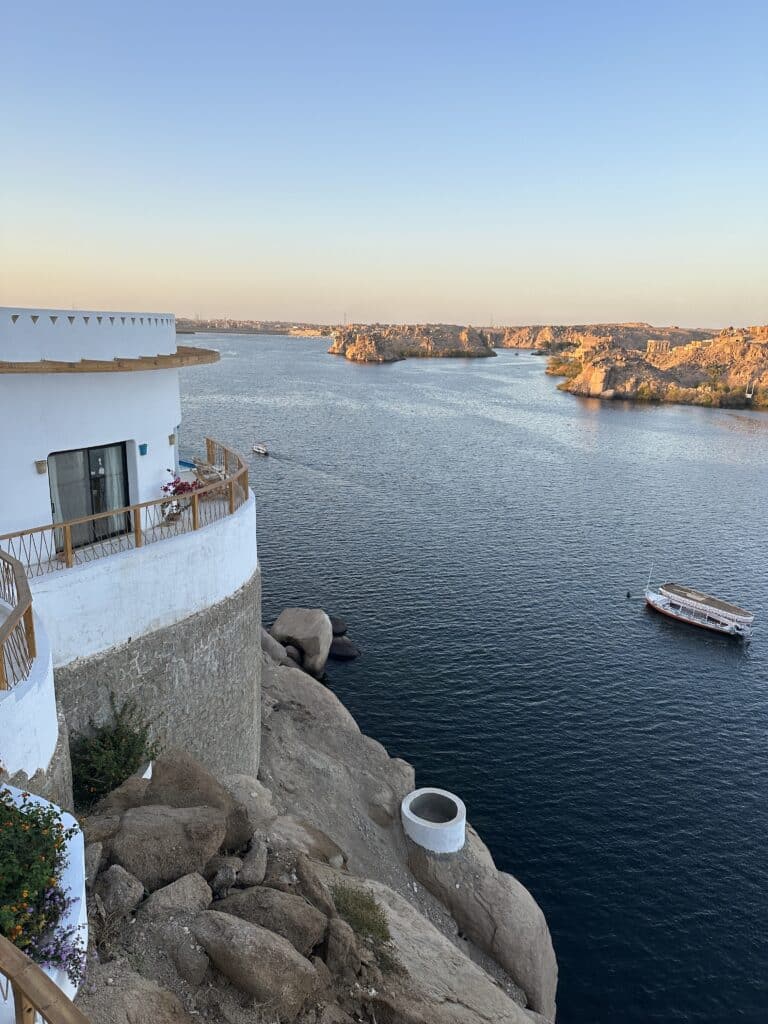
Aswan Low Dam from the BenBen Hotel
- After Aswan, take a Nile River Cruise:
The idea of being trapped on a cruise ship for us is similar to our desire to be trapped visiting museums all day. Except on a boat, you are actually trapped.
This was very different. It’s a must to do a three-night Nile cruise, simply because it’s the best way to get from Aswan to Luxor, and it’s a cool experience. There are many, many boats to choose from; some of the favorites are the Oberoi or the Historia, but make sure there are either terraces on the rooms or a great deck/rooftop space to be outside.
- During the cruise, more and more temples:
A Nile Cruise gives several temple stops, like Kom Ombo and the Temple of Horus in Edfu. Be prepared that the journey to get to the temple in Edfu can be not great, take a car instead of a horse carriage if possible.
The most surprising thing we found about all the temples in Egypt is that after the height of the pharaohs power, and after the Romans came to make their mark, the temples were virtually buried in the sand. When they were eventually “found” (all at different times), they were remarkably intact making them a fascinating site to discover and each has its own rich history. And they’re all gi-normous, much like the egos of the pharaohs that built them, I imagine.
While on the Nile Cruise, take a felucca ride on the river that can be arranged through your guide or the boat during one of the stops, ideally in Aswan.
- Luxor needs two days, don’t try to cram it into one:
Luxor is the hot spot on the Nile and where most Nile cruises end. Luxor the city today is the site of ancient Thebes, which was the pharaohs’ capital at the height of power from the 16th–11th Centuries (yes, B.C). And as noted previously, the pharaohs really liked to build really, really big monuments to themselves. You guessed it, there’s a lot to see here. In the 1300s it was the largest city in the world.
The Nile River splits Luxor into two parts: the East Bank and the West Bank. On the East are the temples of Luxor and Karnak and the location of Luxor the town. The West Bank of Luxor is where the ancient Egyptians buried the dead. Each night, the sun sets on the West Bank, so this became the necropolis; the area filled with tombs and mortuary temples, including the famous Valley of the Kings and Valley of the Queens.
Translation: Graves and mortuary temples on the left, and the town and temples on the right.
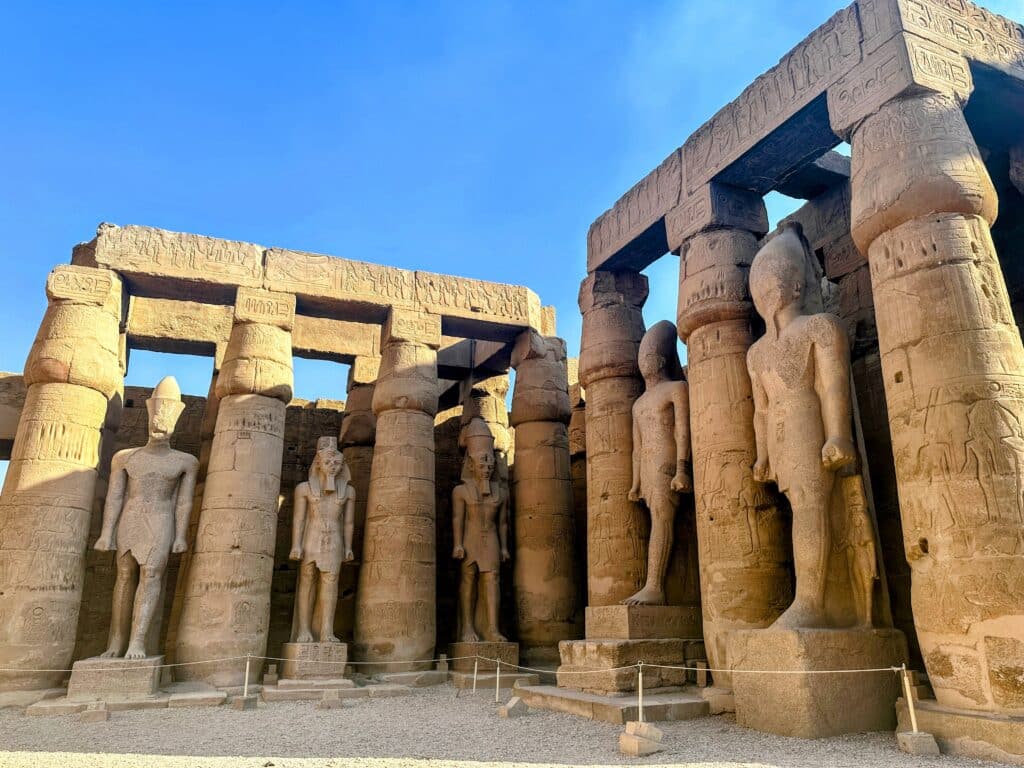
Luxor Temple
- Luxor Day 1: Head to the Valleys of the Kings and Queens
The Valley of the Kings is a royal burial ground for pharaohs from the 18th, 19th and 20th dynasties (the New Kingdom of Egypt). Famous kings from this time period include Tutankhamun, Ramses II, Tuthmosis III, and Seti I, (these are the tombs to see, and as I noted earlier, King Tut is still hanging out there) as well as powerful nobles and some wives and children of the pharaohs. These tombs are very bearable, even with claustrophobia, because of wider hallways and walking areas.
The Valley of the Queens was the main burial site of the wives of the pharaohs. The tombs here are smaller and lack some of the grandeur of the tombs in the Valley of the Kings, with one big exception: The tomb of Queen Nefertari. The level of detail and colors are astonishing considering it’s 3000 years old.
In the Valley of the Queens, take a swing by the mortuary temple dedicated to Queen Hatshepsut, one of the most powerful female rulers of ancient Egypt, and seemingly a manipulative badass.
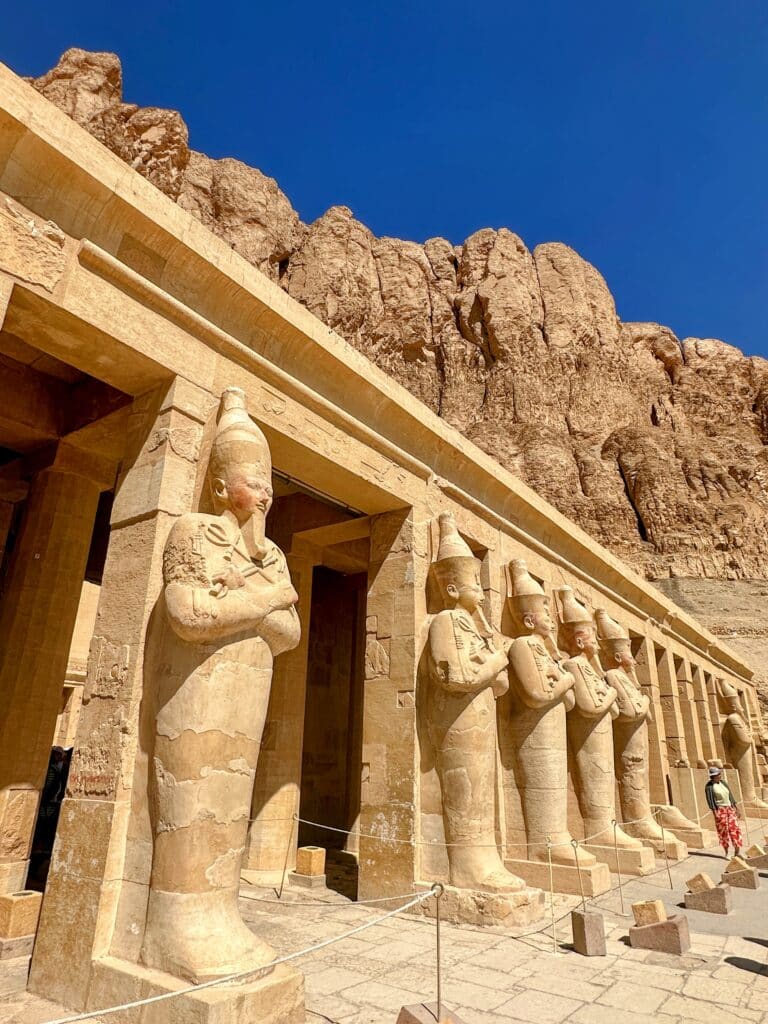
Mortuary Temple of Hatshepsut
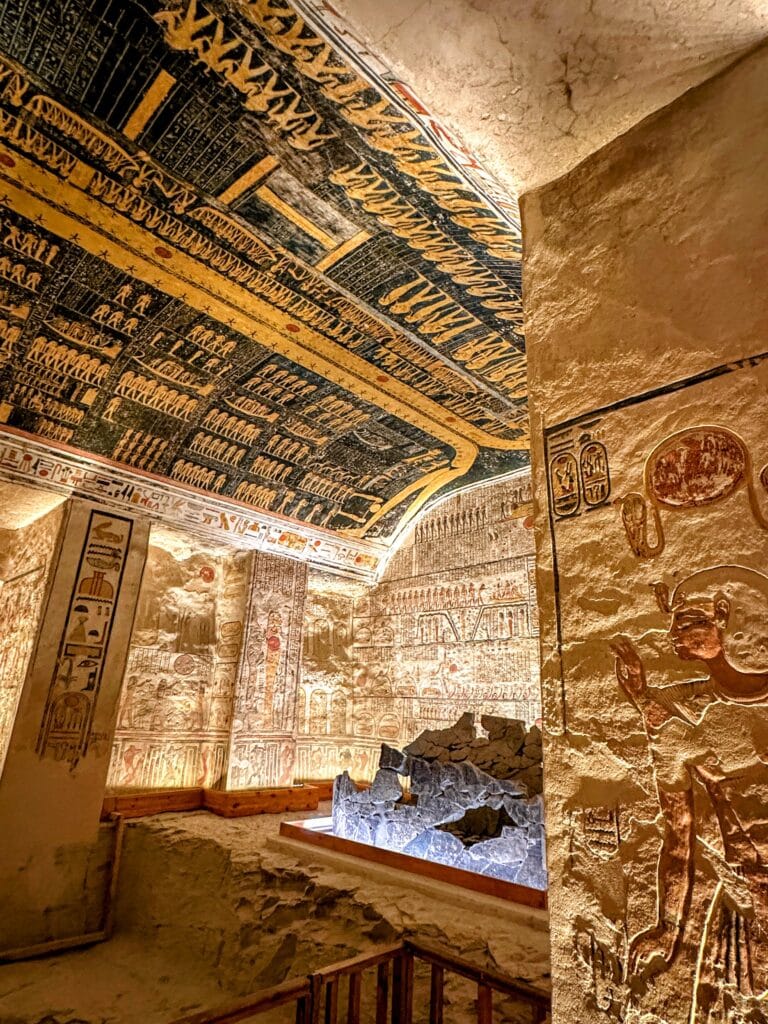
Tomb in the Valley of the Kings

Tomb in the Valley of the Kings
If so inclined, you can visit tombs all day. In addition to the Valley of Kings and Queens, there is the Deir El-Medina, the Valley of the Artisans, where the people that built the tombs are buried, so they’re pretty decked out. Although, down the steps and into the first room of the first tomb, claustrophobia hit hard.
- Luxor Day 2: Visit the Karnak Temple and the Luxor Temple, once connected by the Avenue of the Sphinxes
Even after all the previous temples, these were amazing. Karnak is the biggest in the world next to Angkor Wat, and Luxor is famous for a reason.
Whew.
Egypt is a lot.
And it is touristy, seemingly getting more so with a pretty stable current government. Visiting sooner rather than later is recommended before us westerners destroy this incredible history and the Egyptians let us.
One of the most surprising things was the fact that we could walk right up and into all these ancient sites, touch the walls and take copious pictures of all these ancient wonders.
The other surprising thing was the volume of the temples and the level of detail still intact in all the tombs and temples after thousands of years. It cannot be captured in pictures.
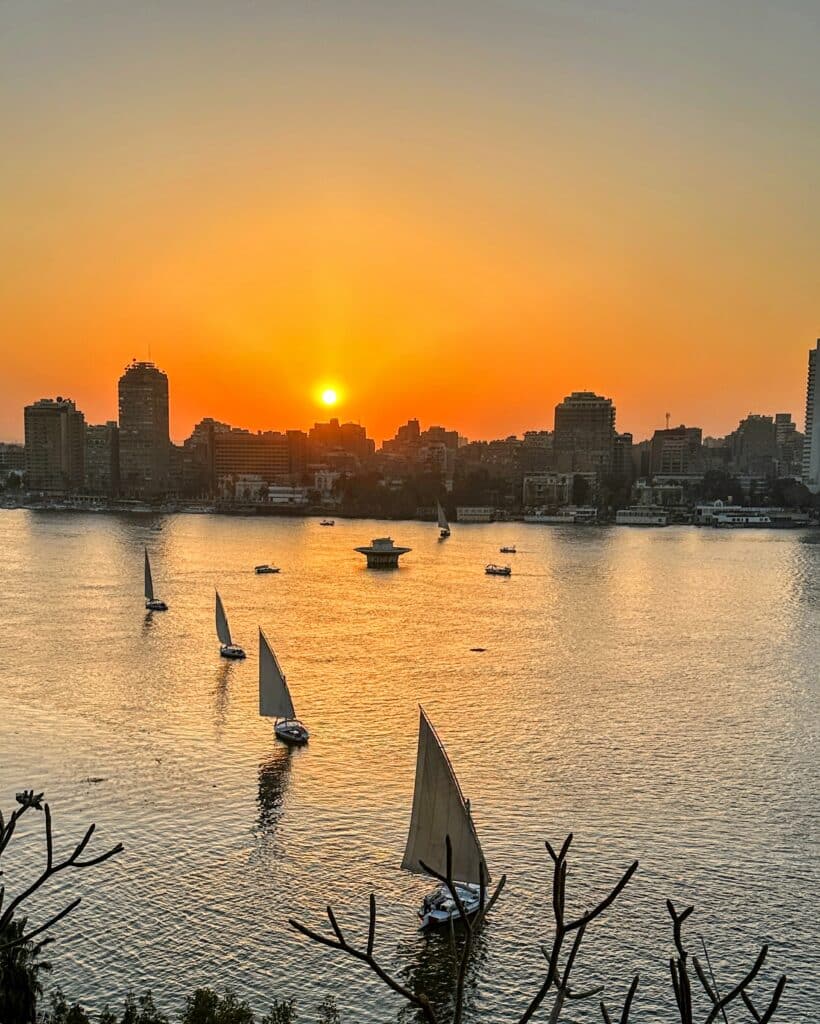
View of the Nile from the hotel in Cairo
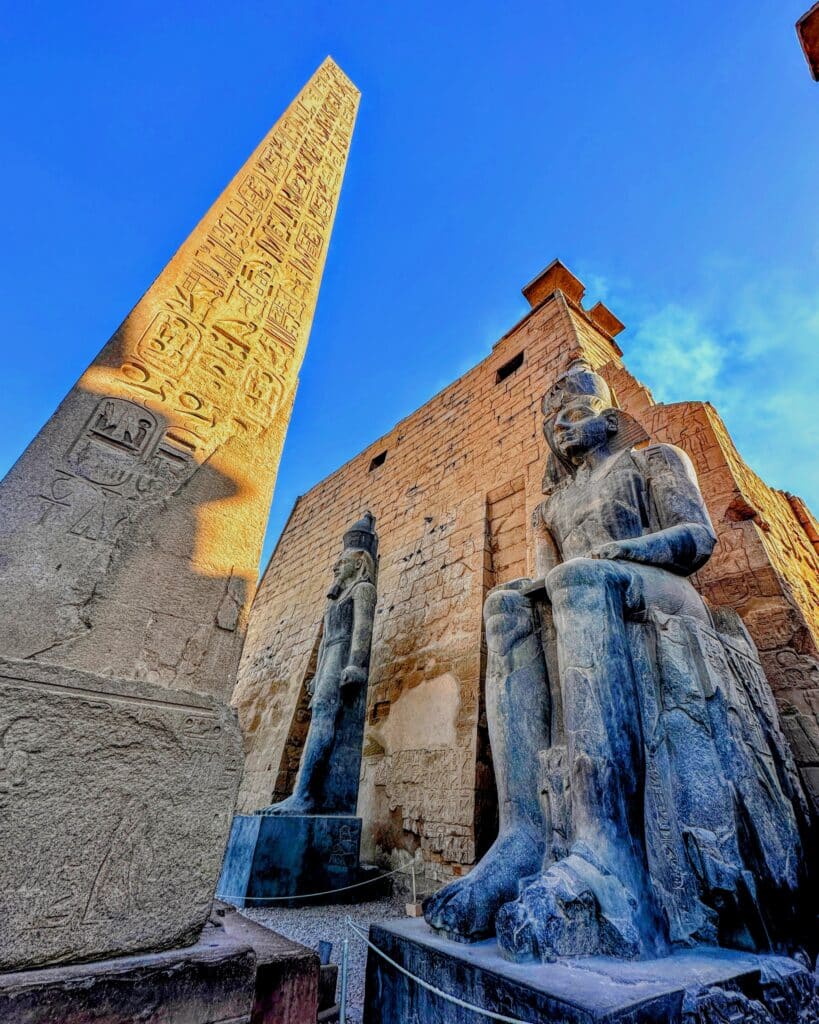
Luxor Temple
For a few days off to recover from the whirlwind tour of the country, Sharm el-Sheikh is a good option.
It’s a new city on the coast with exceptional weather and tons of hotel options. It’s an Egyptian beach town, with the benefit of only being about a 3–4-hour drive from Mount Sinai and the opportunity to hike this spectacular site.
It was a trip like no other for us. It was very tour-forward and scheduled with no real areas of wandering around (unless you count wandering the massive Four Seasons resort in Sharm el-Sheikh) and no bicycling the countryside. It was fascinating and mind-boggling and such an important piece of ancient history; it was a gift to see it.
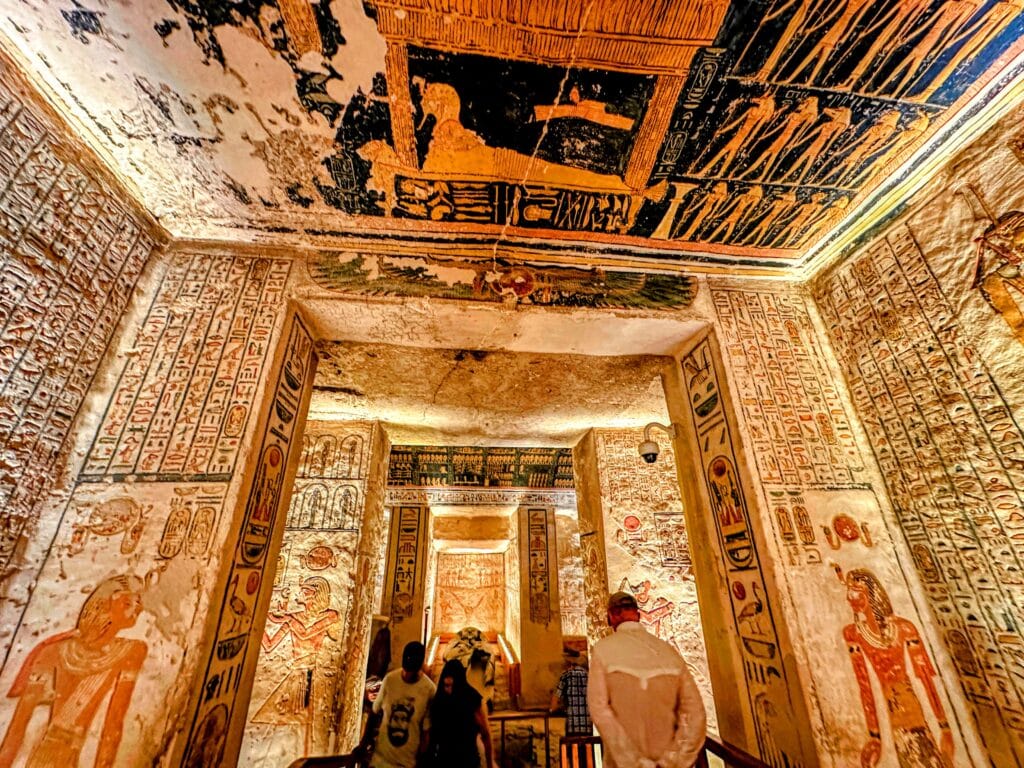
This perhaps was the first blog post that didn’t mention wine (trip planning doesn’t count). Don’t worry, we had some incredible wines. Even in a mostly Muslim country, Egypt makes great wine and access is easy almost everywhere.


